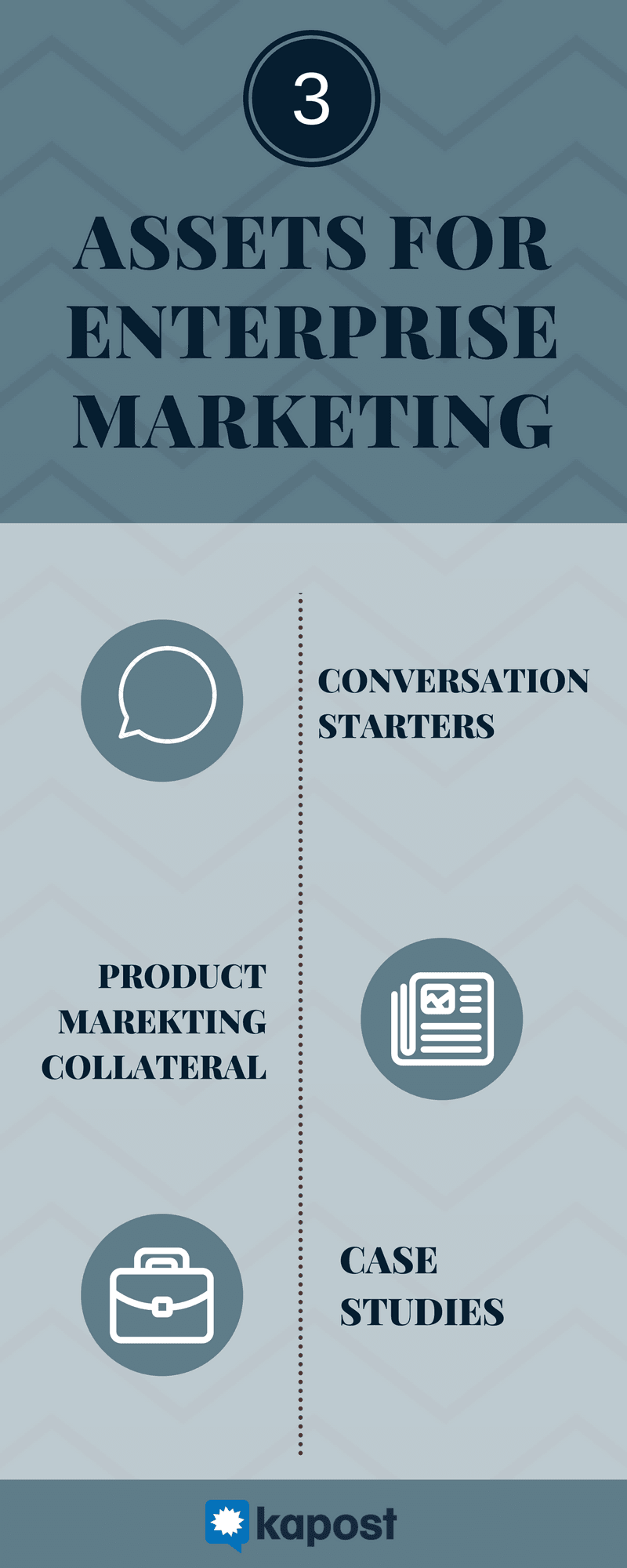Being a sales rep for a B2B organization is far from an easy job. This is a role that requires constant switching between mental modes: from planning prospective strategies to writing compelling cold emails and answering questions over the phone.
Time is at a premium, and it’s common for reps to find themselves hitting roadblocks. How do you initiate conversations that strike the right problem-solving tone? How can individuals within your company clearly articulate the value, expertise, and differentiators that you bring to customer engagements?
The challenge is that there aren’t enough hours in the day for a company to devote the time and attention that prospects need to navigate a purchase decision.
At the same time, strong sales relationships require nurturing and understanding. Deals often involve multiple stakeholders and take years to close.
3 Key Assets for B2B Enterprise Content Marketing
Designed to scale the process of relationship-building, an effective content marketing strategy can help streamline the inherent challenges that arise with complex B2B sales. But starting means working with a blank canvas. How should you plan your blueprint? Divide your content plan into three core strategic areas:

1. Conversation Starters
These pieces, often known as top-of-the-funnel content, can take the form of blog posts, eBooks, infographics, and white papers. They’re pieces that speak to your industry expertise and are educational in nature. They help customers work through challenges, introduce new ideas, share data around market trends, and prioritize information sharing for immediate sales.
Here are three examples for guidance:
- This white paper on the global implications of Brexit highlights Dun and Bradstreet’s expertise on geopolitical and research expertise without discussion of the company’s products. The goal of this asset is to position D&B as a conversation starter in the fields of data and risk management. The company positions itself as a discussion leader.
- The goal of this blog post for the LinkedIn Talent Blog is to initiate a conversation on the topic of artificial intelligence (AI) for recruiting.
- This infographic helps B2B company Hello Scheduling spread awareness and education around the often under-looked area of workplace health.
2. Product Marketing Collateral
These types of documents make it easier for your sales reps to answer questions about your company’s product. An efficient way to develop product marketing content is to take the following steps:
- Ask your sales team to write down frequently asked questions that they receive, in addition to making call recordings or copies of emails that answer those questions
- Listen in on a few conversations to gain a deeper understanding of what prospects want and need to make a decision—study the nuances
- Turn these brainstorms and existing pieces of writing into neatly-packaged product marketing collateral that include one sheets, short guides, and other relevant details about your customer
3. Case Studies
Let your customers attest to the quality of your products and services. Narrative-based case studies examine the nuances of your company, as well as how you differentiate from your competitors. By making your testimonials a story rather than a promotion, you can shed light on the inner workings of your company.
This information will help your prospects determine whether your products will be the right fit. Instead of receiving an influx of leads, you’ll improve the precision of your qualified leads and thereby improve your sales efficiency. Check out this example of a narrative-style case study from a Lob, a tech startup that delves into the company’s product experience without being salesy.
Final Thoughts on B2B Enterprise Content Marketing
Content is a problem-solving and communication tool that can be both rigorous and methodical. Study your sales process. Figure out your bottlenecks. Write, distribute, collect data, analyze, and improve. Make an impact on revenue by helping your company take the selling out of your sales process.
